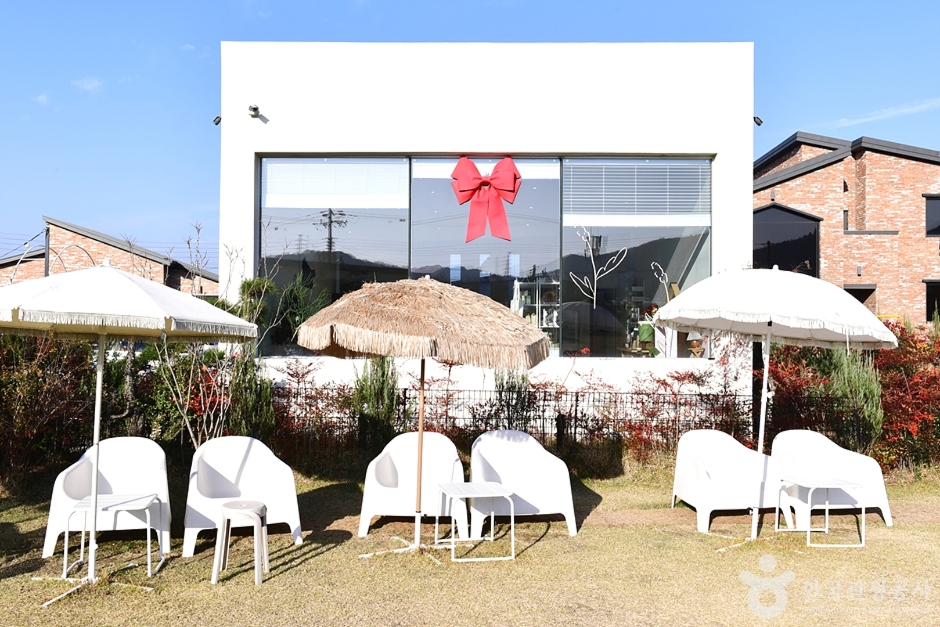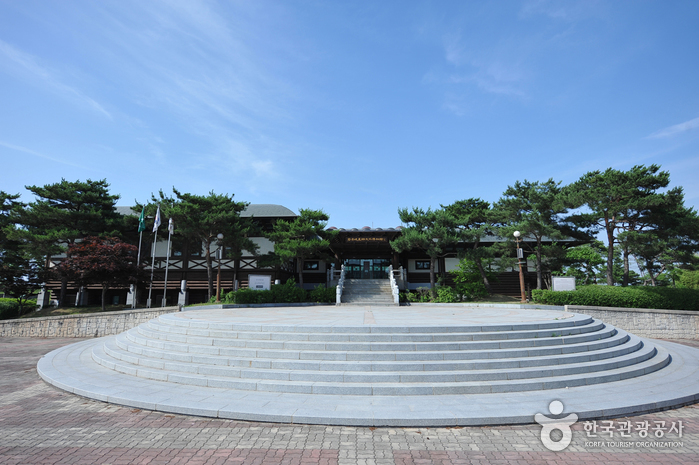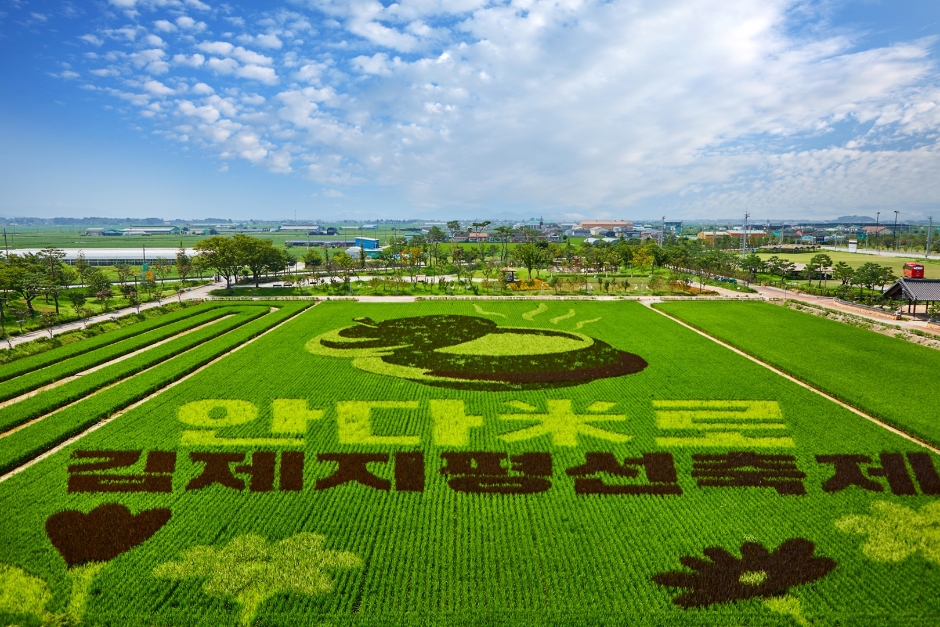Jeonju World Cup Stadium (전주월드컵경기장)
16.1Km 2024-04-07
1055, Girin-daero, Deokjin-gu, Jeonju-si, Jeonbuk-do
+82-63-239-2546
The Jeonju World Cup Stadium was built with tradition in mind as its roof and stands are designed with an image of traditional fan, the pillars in sotdae design and cables in 12 strings of gayageum.
Homeplus - Jeonbuk Jeonju Branch [Tax Refund Shop] (홈플러스 전북전주)
16.3Km 2024-06-28
771, Baekje-daero, Deokjin-gu, Jeonju-si, Jeollabuk-do
-
Jeonju International Sori Festival (전주세계소리축제)
16.3Km 2025-04-18
31 Sori-ro, Deokjin-gu, Jeonju-si, Jeonbuk-do
+82-63-232-8394
Jeonju International Sori Festival offers visitors a chance to enjoy various traditional Korean music as well as music from around the world. Held every year in Jeonju since 2000, music flows throughout the festival period.
Sori Arts Center of Jeollabuk-do (한국소리문화의전당)
16.4Km 2024-04-06
31, Sori-ro, Deokjin-gu, Jeonju-si, Jeonbuk-do
+82-63-270-8000
The city of Jeonju prides itself on its rich local culture and history of tradition. Residents are passionate about their heritage, especially when it comes to the arts. The Sori Arts Center of Jeollabuk-do exemplifies and celebrates these community values by regularly offering a full program of visual arts shows. An excellent venue for leisure activities, events, and gatherings, the building itself boasts a stunning architectural style that underscores the institution’s desire to increase art appreciation worldwide.
* Foundation: September 21, 2001
Korea Expressway Corporation Arboretum (한국도로공사수목원)
16.5Km 2024-05-28
462-45 Beonyeong-ro, Deokjin-gu, Jeonju-si, Jeonbuk-do
+82-63-212-0652
The Korea Expressway Corporation Arboretum is located in Jeonju and operated by Korea Expressway Corporation. The arboretum was opened to counterbalance the environmental damage caused by the construction of expressways. As such, the arboretum maintains and promotes the conservation of many beautiful flora from across the country.
Jeonju Zoo (전주동물원)
16.7Km 2024-04-07
68, Sori-ro, Deokjin-gu, Jeonju-si, Jeonbuk-do
+82-63-281-6759
Located about 1 kilometer away from Deokjin Park in Deokjin-gu, Jeonju-si, the zoo is equipped with not only diverse animals and plants, but also a field for soccer, a volleyball court and many other sports facilities. In addition to their leisure grounds, the amusement park 'DreamLand' is found to the eastside of the zoo.
Opened on June 10, 1978, the zoo houses visitors' all time favorites like tigers, lions, giraffes, hippos, buffalo, rhinos, camels and more exotic animals, coming to a total of 670 animals made up of 106 different species.
Olive Young - Jeonju Songcheon Branch [Tax Refund Shop] (올리브영 전주송천점)
16.9Km 2024-06-28
152, Sollae-ro, Deokjin-gu, Jeonju-si, Jeonbuk-do
-
Muisahoe (무이사회)
17.6Km 2024-04-07
22-5 Sugok-gil, Deokjin-gu, Jeonju-si, Jeonbuk-do
Muisahoe, situated 20 minutes from the center of Jeonju, is a café designed with both dogs and their owners in mind. It boasts a spacious grassy outdoor area for dogs to play and a large indoor space for owners to relax. The café's standout drink is the Muisoop latte, a unique blend of milk cream and brown sugar. There's a weight limit for dogs, allowing entry only to those weighing 17 kilograms or less. However, customers without dogs are equally welcome to enjoy the café's offerings and atmosphere.
Byeokgolje Museum of Agricultural Culture (벽골제 농경문화 박물관)
18.4Km 2024-04-06
442, Byeokgolje-ro, Gimje-si, Jeonbuk-do
+82-63-540-4989
The largest irrigation facility in Korea, Byeokgolje Reservoir (Historic Site) is considered the birthplace of Korea’s rice-farming culture. All that remains of the reservoir today are a three-kilometer long embankment that spans from Sinyong-ri to Wolseung-ri in Buryang-myeon, Gimje-si and a monument that was erected in 1415. The Byeokgolje Museum of Agricultural Culture exhibits around 250 artifacts related to rice farming; located within the same complex is an experience center where visitors can discover many properties of irrigation facilities first-hand.
Byeokgolje Reservoir Site (김제 벽골제)
18.4Km 2024-04-07
442 Byeokgolje-ro, Buryang-myeon, Gimje-si, Jeonbuk-do
+82-63-540-4094
Byeokgolje Reservoir Site is home to the embankment and stele recording reconstruction for Korea’s first ever reservoir. Records show it was rebuilt in the 6th year of King Wonseong of Silla (790), the 21st year of King Hyeonjong and King Injong of Goryeo (1143), and then again in the 15th year of King Taejong of Joseon (1415). It was lost due to heavy rain in 1420 (the 2nd year of King Sejong's reign).
Currently, only about 3 kilometers of straight embankment remains on the site. In 1925, the Dongjin Land Improvement Association remodeled this embankment and used it as a channel for providing water for farming, thus losing a lot of its original appearance. A monument was erected on the north side of the embankment to commemorate the rebuilding of Byeokgolje Reservoir during the Joseon Dynasty. However, it is difficult to read the writing because it is worn out.
In 1975, two sites with water gates that controlled the water in the reservoir were excavated, and the results showed that the construction used large-scale, high-level engineering technology. Byeokgolje Reservoir is not only significant in that it was Korea's first reservoir but also proves that the country’s civil engineering technology was developed enough to build such a reservoir at the time, revealing a groundbreaking fact in the history of science and technology in Korea.
Nearby tourist attractions can be visited together: Byeokgolje Agricultural Museum, where you can get a glimpse of the old agricultural culture, Theme and Experience Space for Agriculture, and Byeokcheon Art Gallery, which displays the works of Na Sang-mok, an Oriental Painting artist in Korea.
* Pets are allowed; however, a leash is required.

![Homeplus - Jeonbuk Jeonju Branch [Tax Refund Shop] (홈플러스 전북전주)](http://tong.visitkorea.or.kr/cms/resource/56/3313356_image2_1.jpg)




 English
English
 한국어
한국어 日本語
日本語 中文(简体)
中文(简体) Deutsch
Deutsch Français
Français Español
Español Русский
Русский